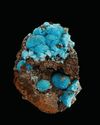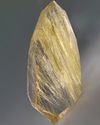
The Theodore Roosevelt Dam is located on the Salt River, northeast of Phoenix. The masonry dam was built between 1905 and 1911 and was renovated and expanded between 1989 and 1996. The dam is 357 feet high, with a hydroelectric generating capacity of 36,000kW. It was the first major project under the new federal law of 1902 - the Reclamation Act - which paved the way for irrigation projects to aid the arid western states’ settlement.
The dam sits at the confluence of Tonto Creek and the Salt River. The location of this narrow gorge was initially called “The Crossing” by early Arizona pioneers. It was the place on the Salt River where Native Americans, farmers, and ranchers would ford the river. The dam forms the artificial 21,500-acre Theodore Roosevelt Lake. The project’s primary purpose was to provide water storage and flood control through the Salt River Valley.
The dam is named after US President Theodore Roosevelt, who dedicated the dam on March 18, 1911. During the dedication speech, Roosevelt said that his administration’s two proudest achievements were the Reclamation Act and the Panama Canal.
In 1963, the Roosevelt Dam became a National Historic Landmark but withdrawn in 1999, the reason being the 1989 modifications had altered the original design’s integrity.
This story is from the {{IssueName}} edition of {{MagazineName}}.
Start your 7-day Magzter GOLD free trial to access thousands of curated premium stories, and 9,000+ magazines and newspapers.
Already a subscriber ? Sign In
This story is from the {{IssueName}} edition of {{MagazineName}}.
Start your 7-day Magzter GOLD free trial to access thousands of curated premium stories, and 9,000+ magazines and newspapers.
Already a subscriber? Sign In

THE BRIGHT SIDE OF VOLCANIC ROCK
As a mineral resource, volcanic rock is decidedly short on glamour.

The Other Copper Minerals
12 Lesser-known Collectible Species

MINERAL COLLECTING -AND ROCK & GEM
Evolving Together FOR 54 YEARS

Gemstone Trends
A Look Back at 2024 & What to Expect in 2025

How to Make a GEM BEAD NECKLACE
No Lapidary Experience Needed!

Framing Nature's Art
Faceting Rutilated Quartz for Beginners

BEDAZZLED BLUE SEAM AGATE
More than several centuries ago, mining was the profession most often seen as befitting of men.

ROCK & GEM FIELD GUIDE:
Spinel is a captivating gemstone with a rich history of being mistaken for gems like ruby and sapphire.

SNAKE SCALE DROP 1.5:1
This Faceting Focus is revisiting the briolette gemstone design because of its popularity with independent and hobby gemstone faceters.

STONE CHIC
How Earth-Inspired Decor Brings Comfort to our Home